To my other GT6
pages
March 11, 2021
Radiator & Fan
The GT6, like just about all other liquid cooled cars, used a
pump-assisted thermosiphon cooling system. Coolant picks up
waste heat from the engine and transports it to the unfortunately
named "radiator", where the heat is transferred to the
environment. "Radiator" is a misnomer because radiation
doesn't play a large part in the heat transfer. Convection
is the main mechanism to shed heat to the surroundings, and the
efficiency of the convection is boosted by actively forcing air
through the radiator. In the stock GT6, the forced
convection is accomplished by a crankshaft mounted fan.
While this mechanical fan is dirt simple and pretty effective, it
isn't ideal. First, the fan spins the fastest at high road
speeds, when it isn't really needed at all. At idle, airflow
from the fan may be marginal during hot weather. Further,
spinning the fan takes significant work, and this reduces the
power available to go to the wheels. For this reason, I (and
many others) decided to investigate an electrically driven
fan. An electric fan can be controlled by a thermostat, so
it is only spinning (and using energy) when it is actually needed.
But first, the radiator itself. This 52 year old
radiator actually looked pretty good, aside from the fact that
most of the paint was gone or in bad shape.
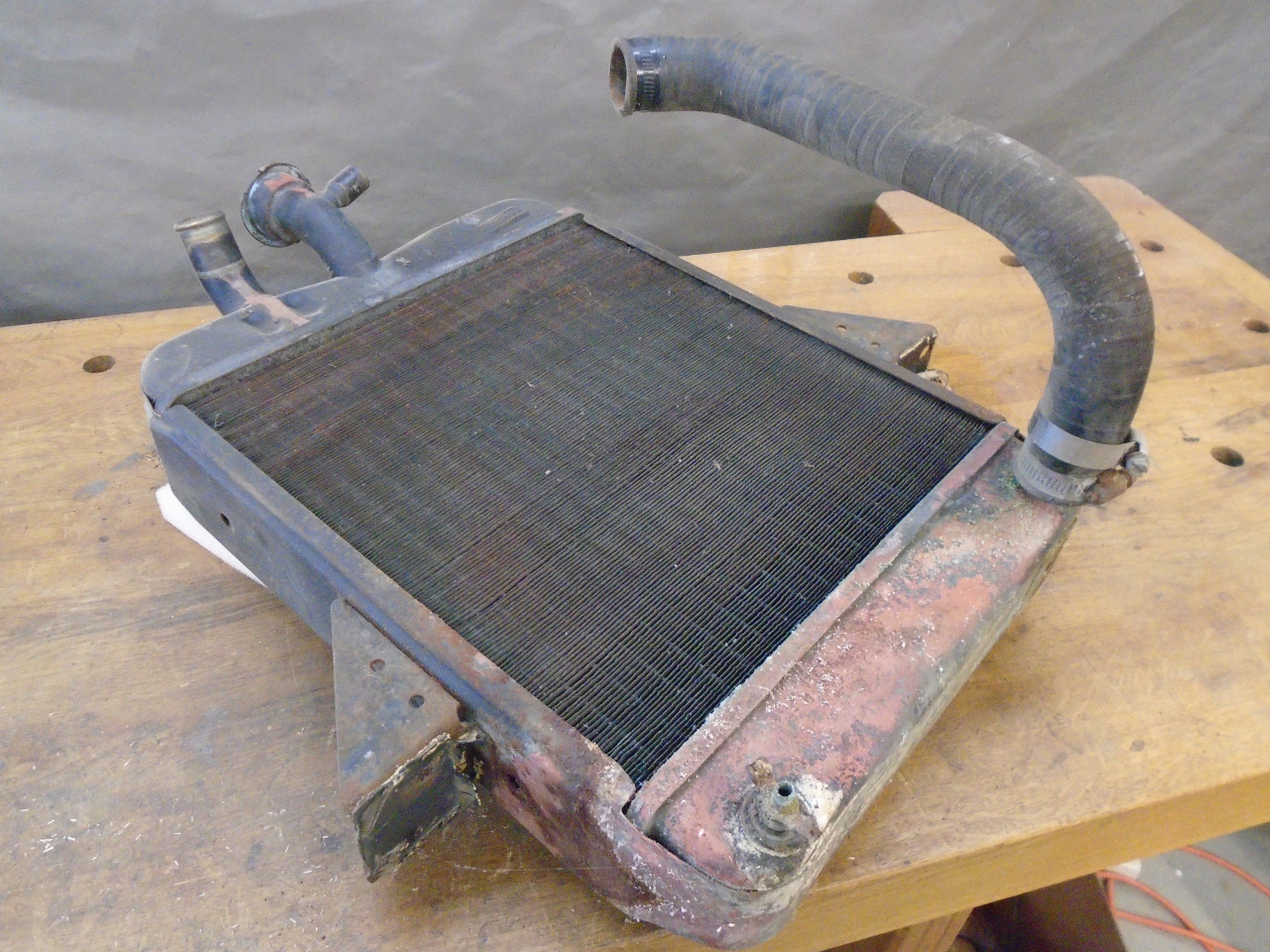
The first task was to see if the radiator was water tight. I
wedged in pieces of plastic laminate on each side of the core to
protect the fins while I was handling the radiator. I
plugged the bottom outlet, put the radiator in the shop sink, and
filled it with water.
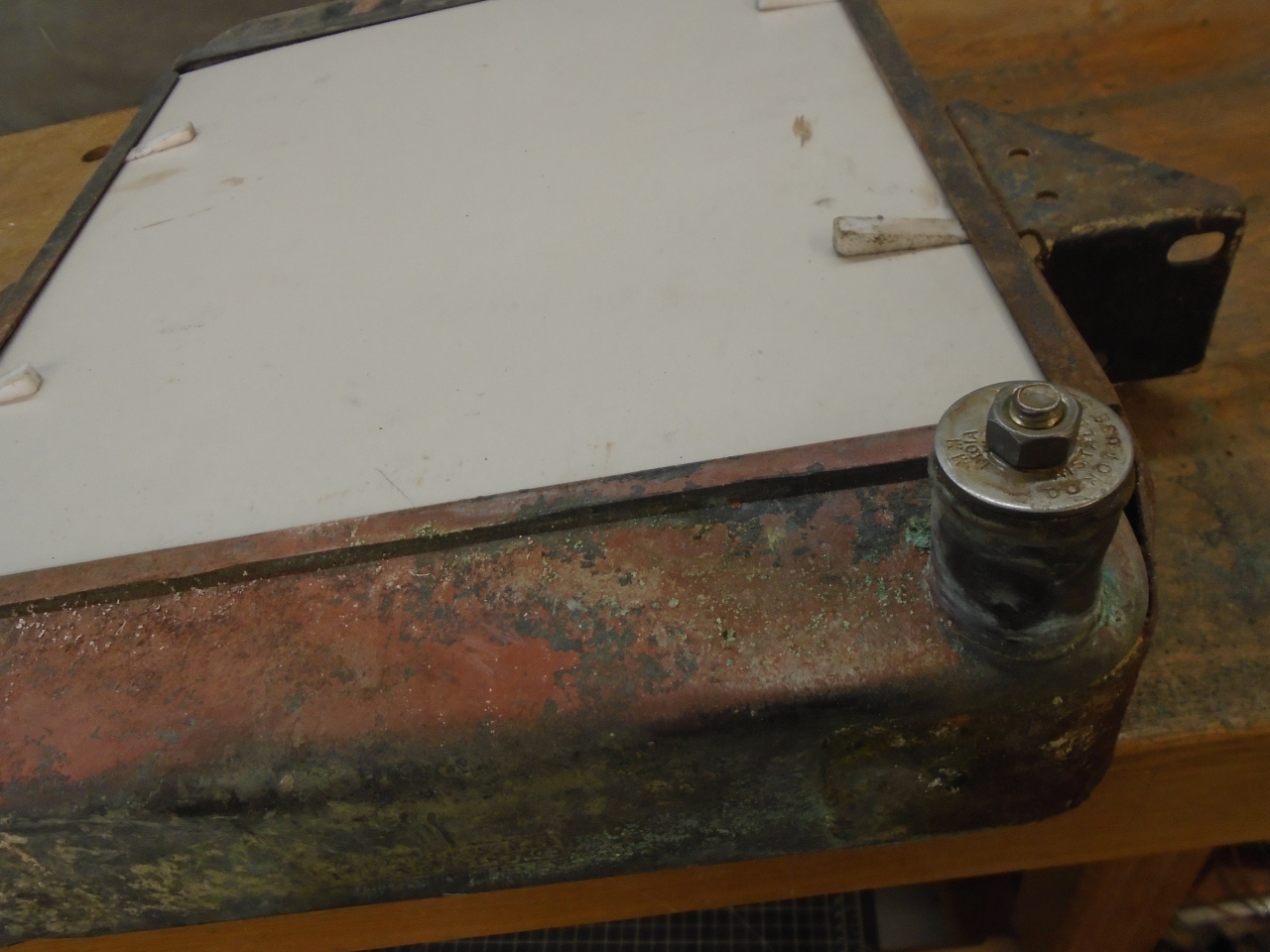
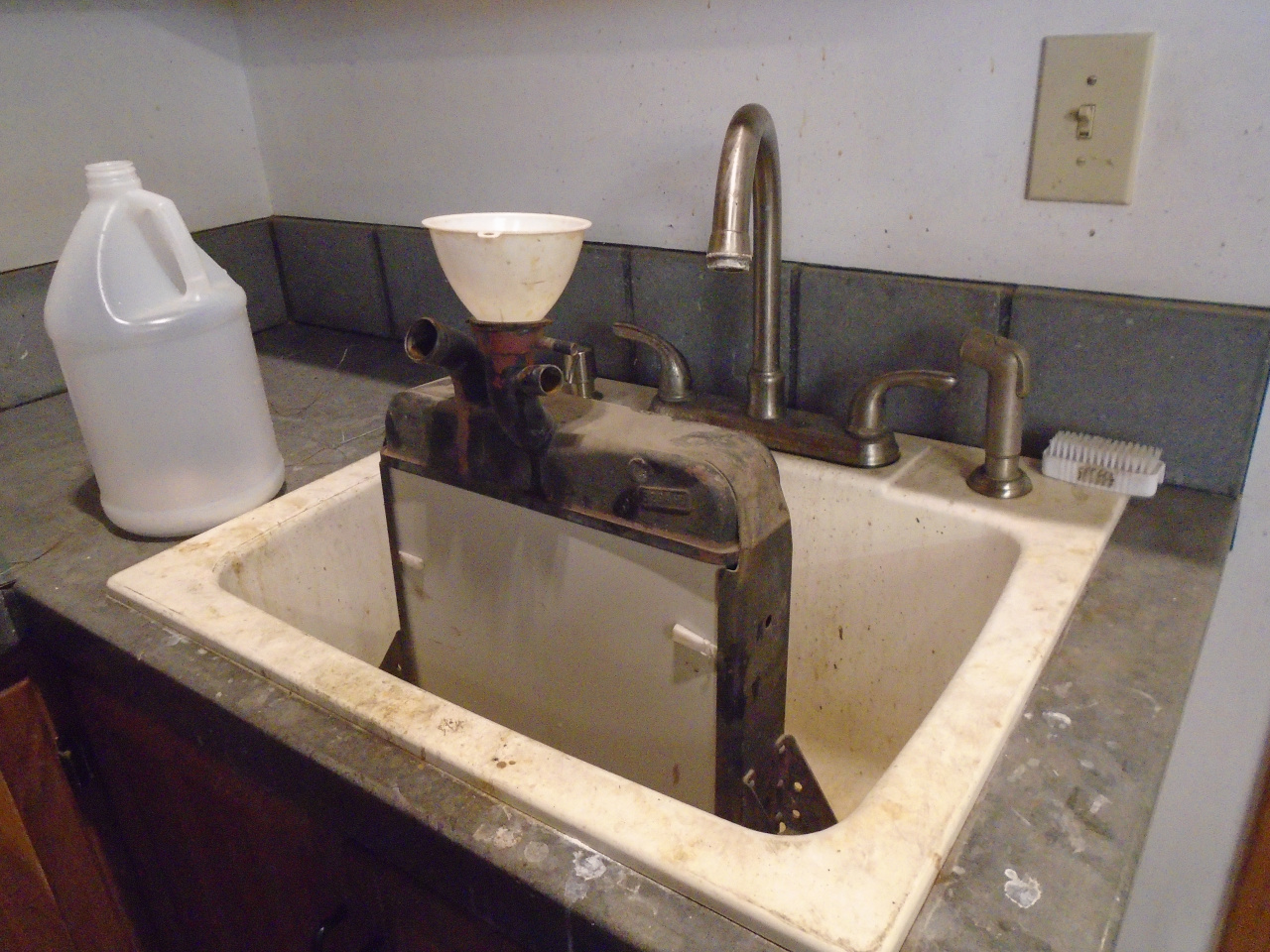
Well, it leaked like a sieve. I couldn't actually see where
it as leaking, but it was near the bottom of the core. This
is probably why most of the paint on the bottom tank was gone.
So, with an unusable radiator, I had to decide what to do
about it. Do I have the original repaired?
Replaced? If replaced, copper/brass, or aluminum?
Aluminum radiators are relatively cheap and popular, but anecdotes
abound about short lifetimes.
I took the radiator to a local place that specializes in classic
car radiators. They told me that the core wasn't really
repairable, but that it could be re-cored. I ended up having
my original radiator re-cored for about the same cost as a quality
US made aluminum radiator.
I asked them to not paint the outside of the radiator, since I
still had some work to do on it. A repaired, but unpainted
radiator is not exactly a thing of beauty.
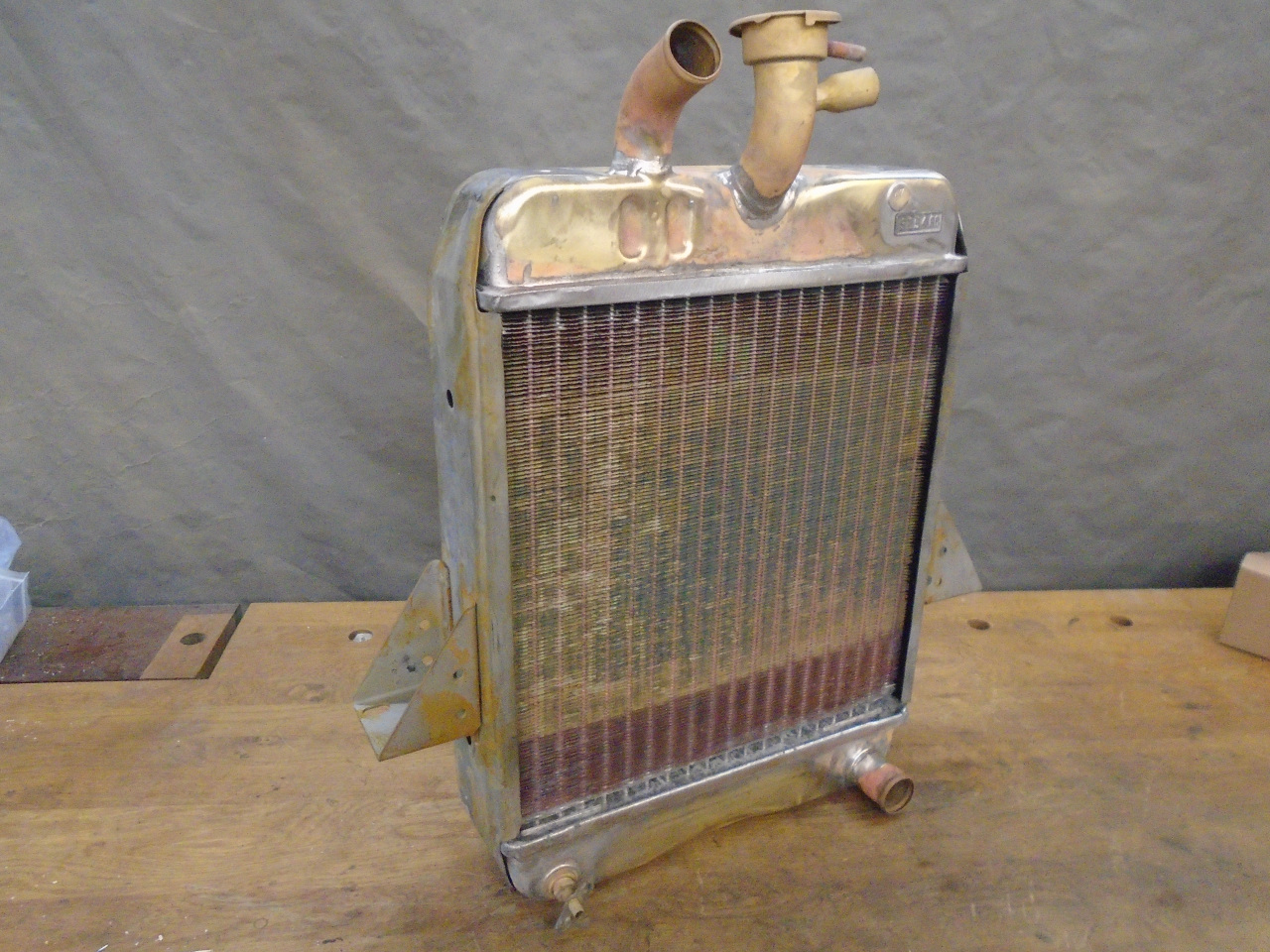
The shop paid a lot of attention to detail, like removing minor
dents, and replacing these soldered on tags. I didn't even
notice them before.

And for me, one of the reasons to keep the original is details
like this.

One thing I had to do before painting is to install a bung for the
fan temperature switch. Two schools of thought place this
switch at the top or at the bottom of the system. I think
either can work, possibly with a different temperature spec for
the switch. The bottom switch on my TR6 seems to work just
fine, so decided to install the switch in the bottom radiator
tank. The switch I bought was clever, I thought. The
slug in the center screws into a bung in the radiator, and the
switch (on the left) screws into the slug. This way, the
switch can be replaced without draining the cooling system.
The piece on the right is a the home made bung.
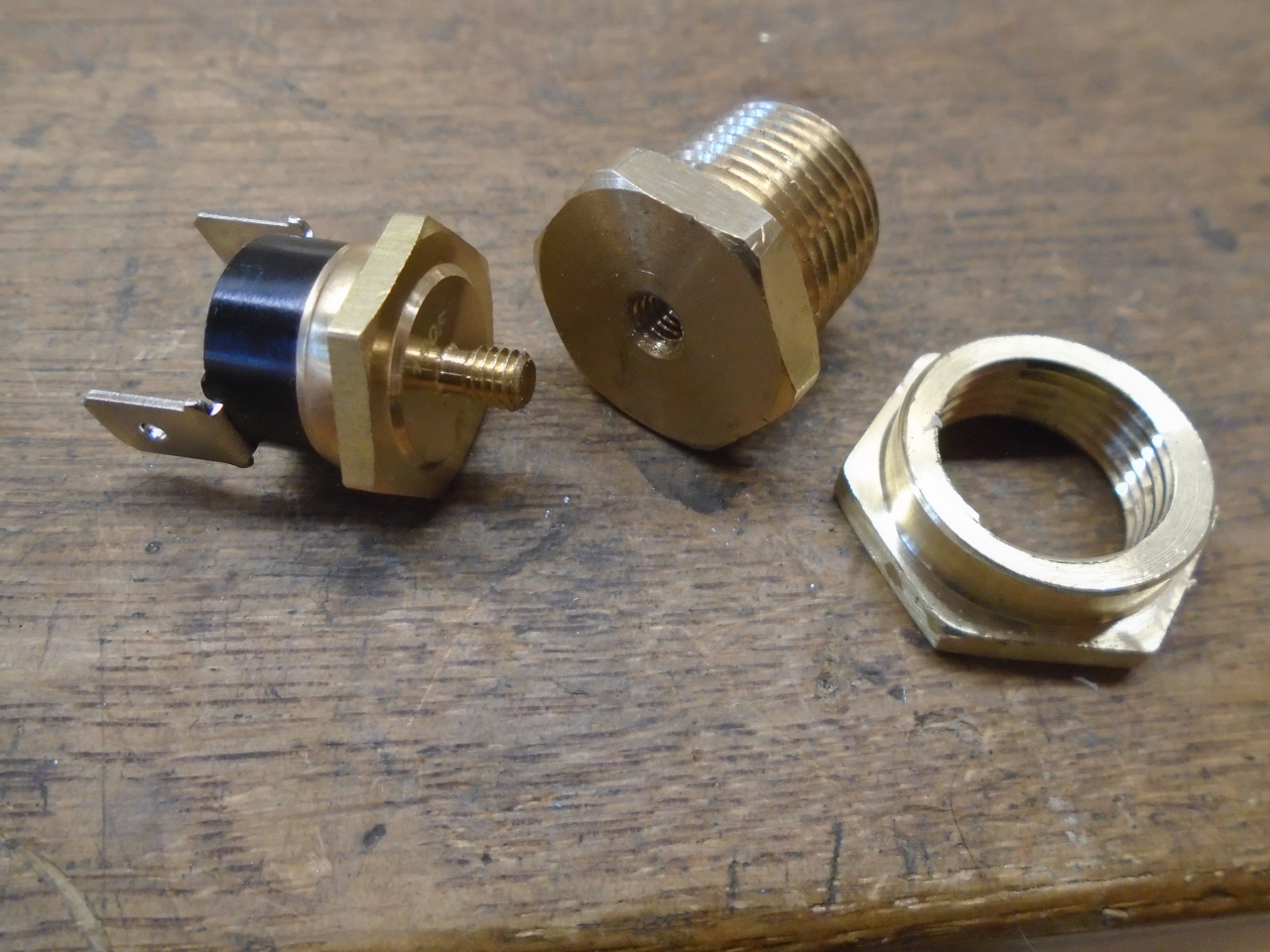
Installing the bung.
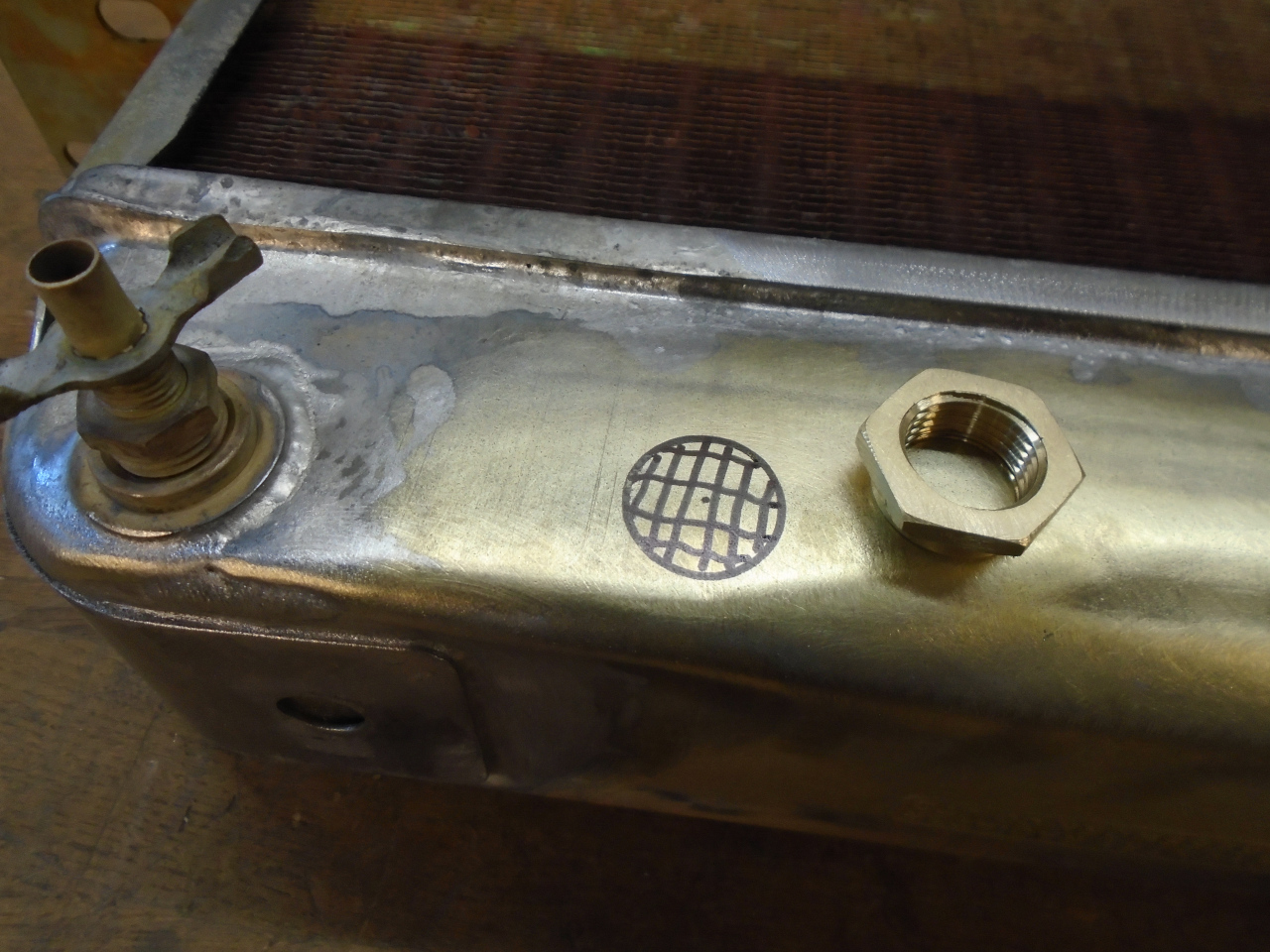
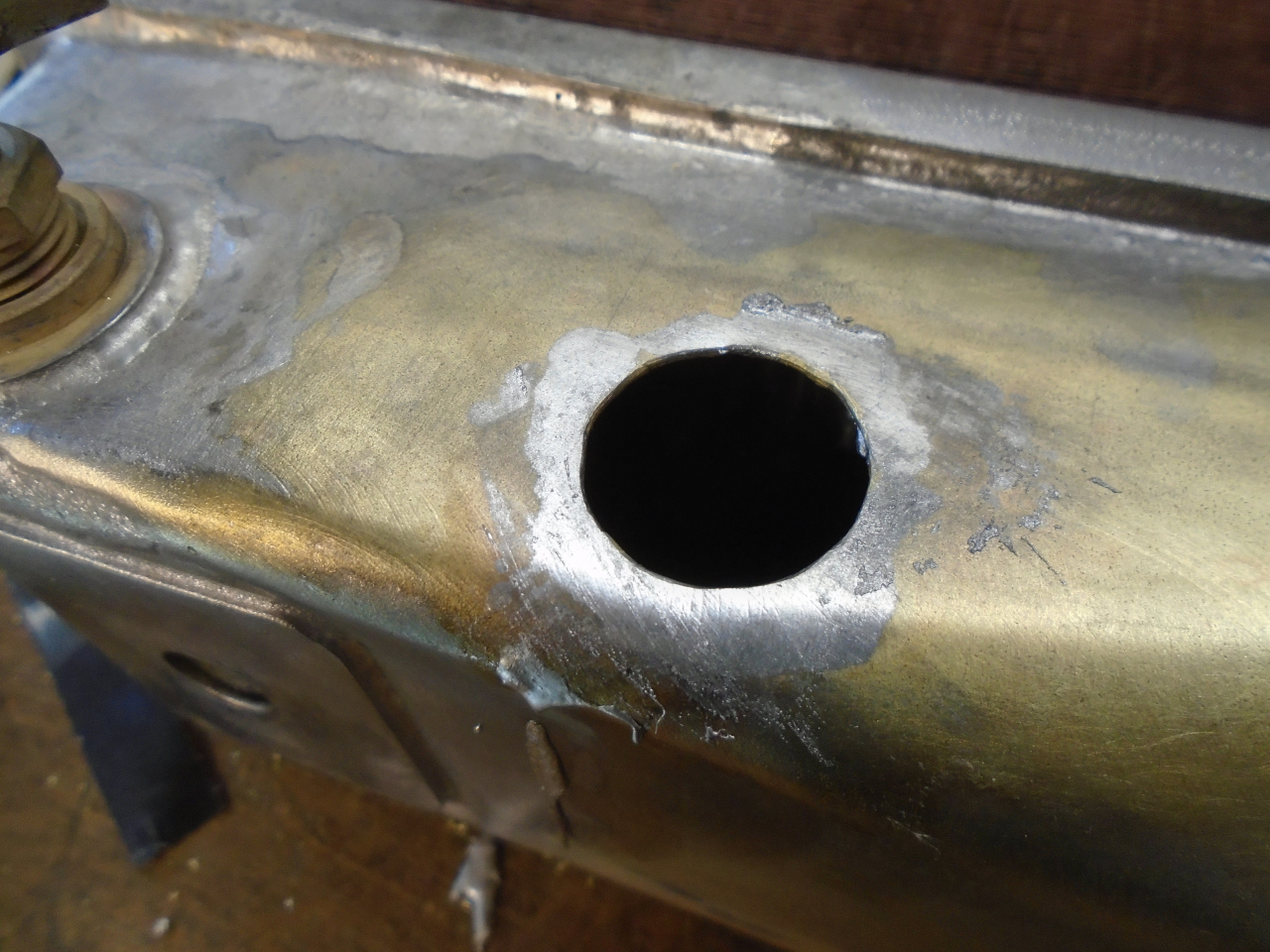
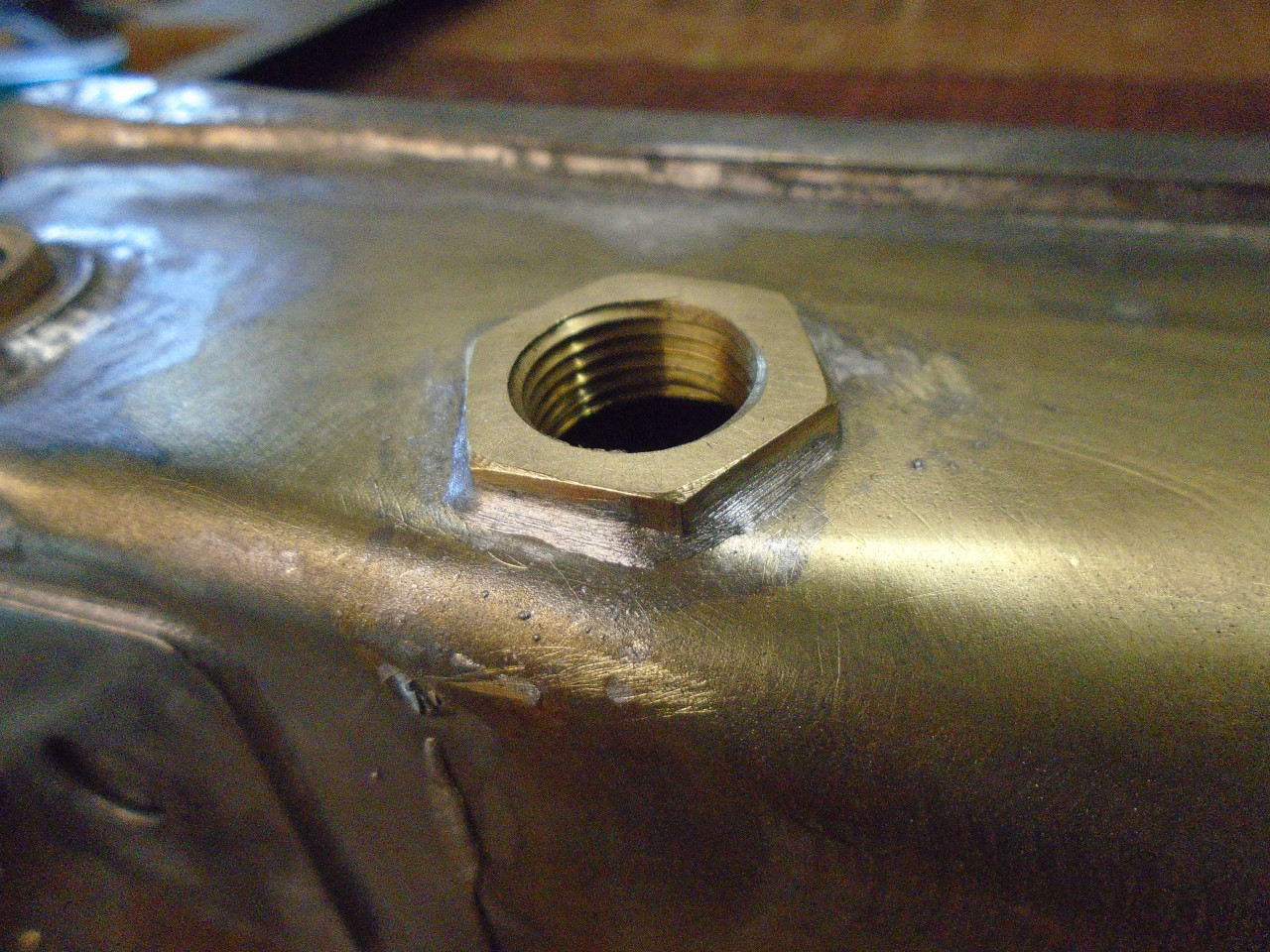
While the radiator was at the shop, I ordered and received this
Spal 12-inch puller fan. It's a perfect fit for this
radiator.
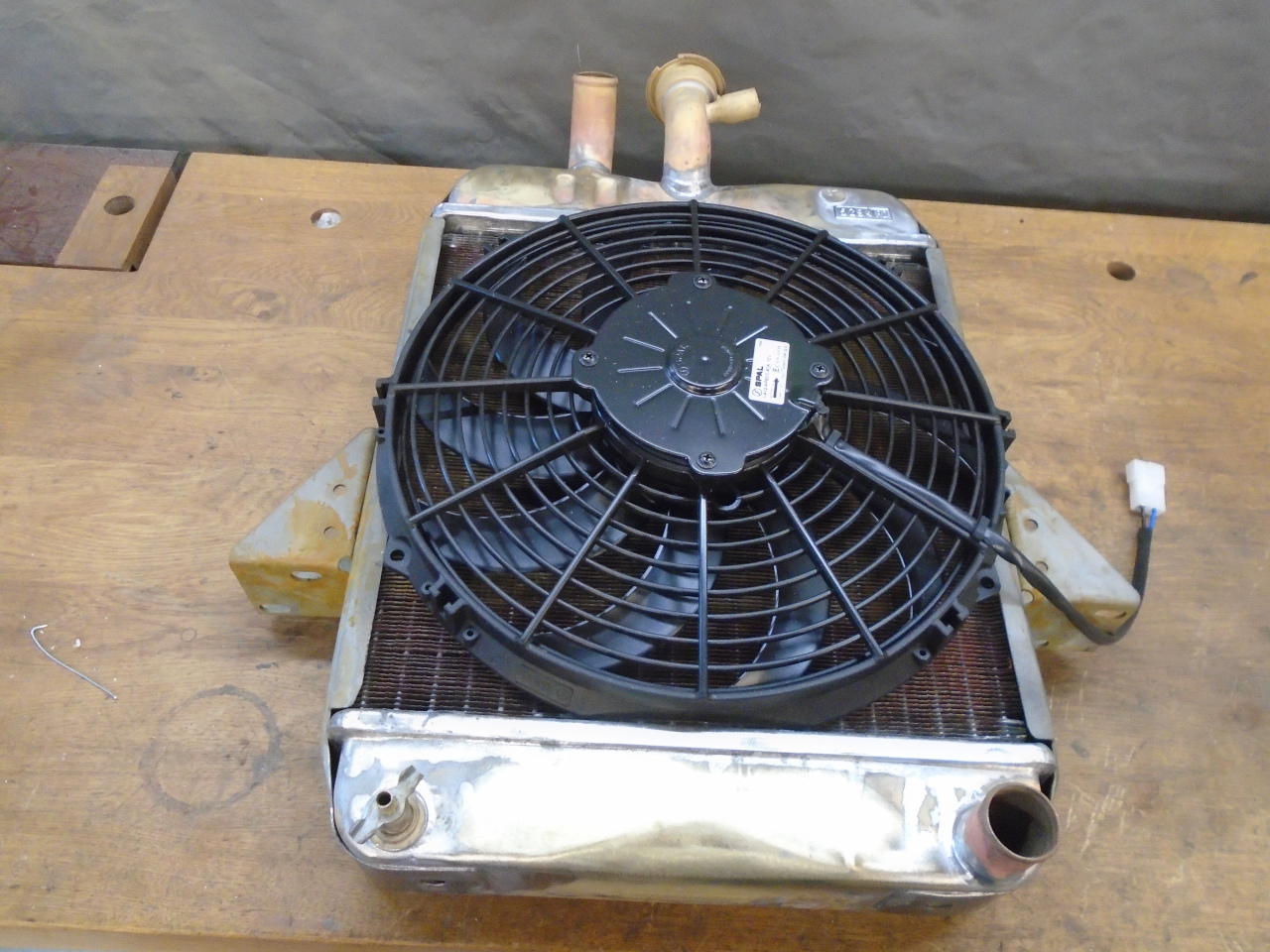
The fan has four mounting eyes. I just needed to make four
little brackets.
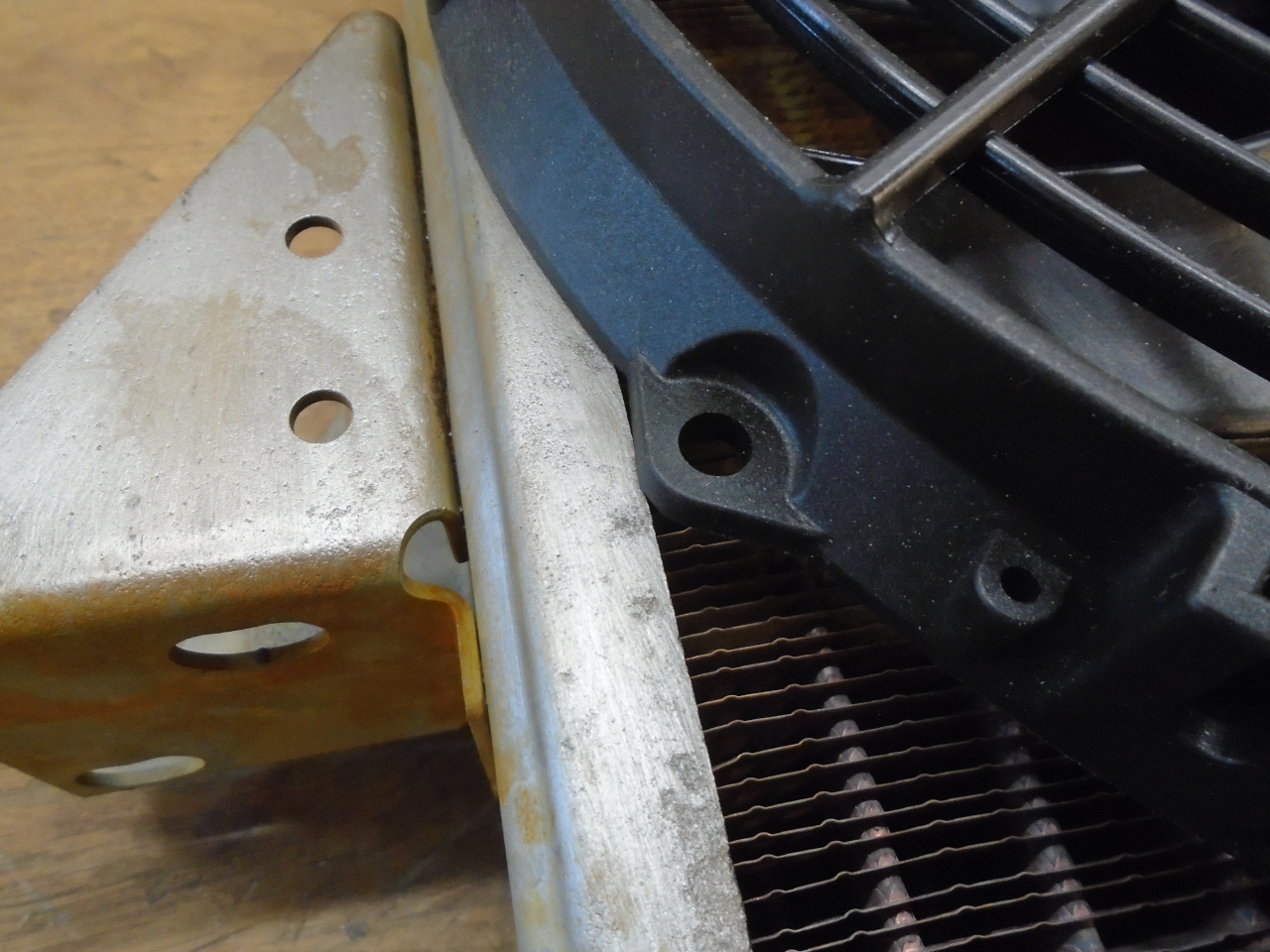
Started with some little steel tabs, silver brazed in some studs,
and then zinc plated them.
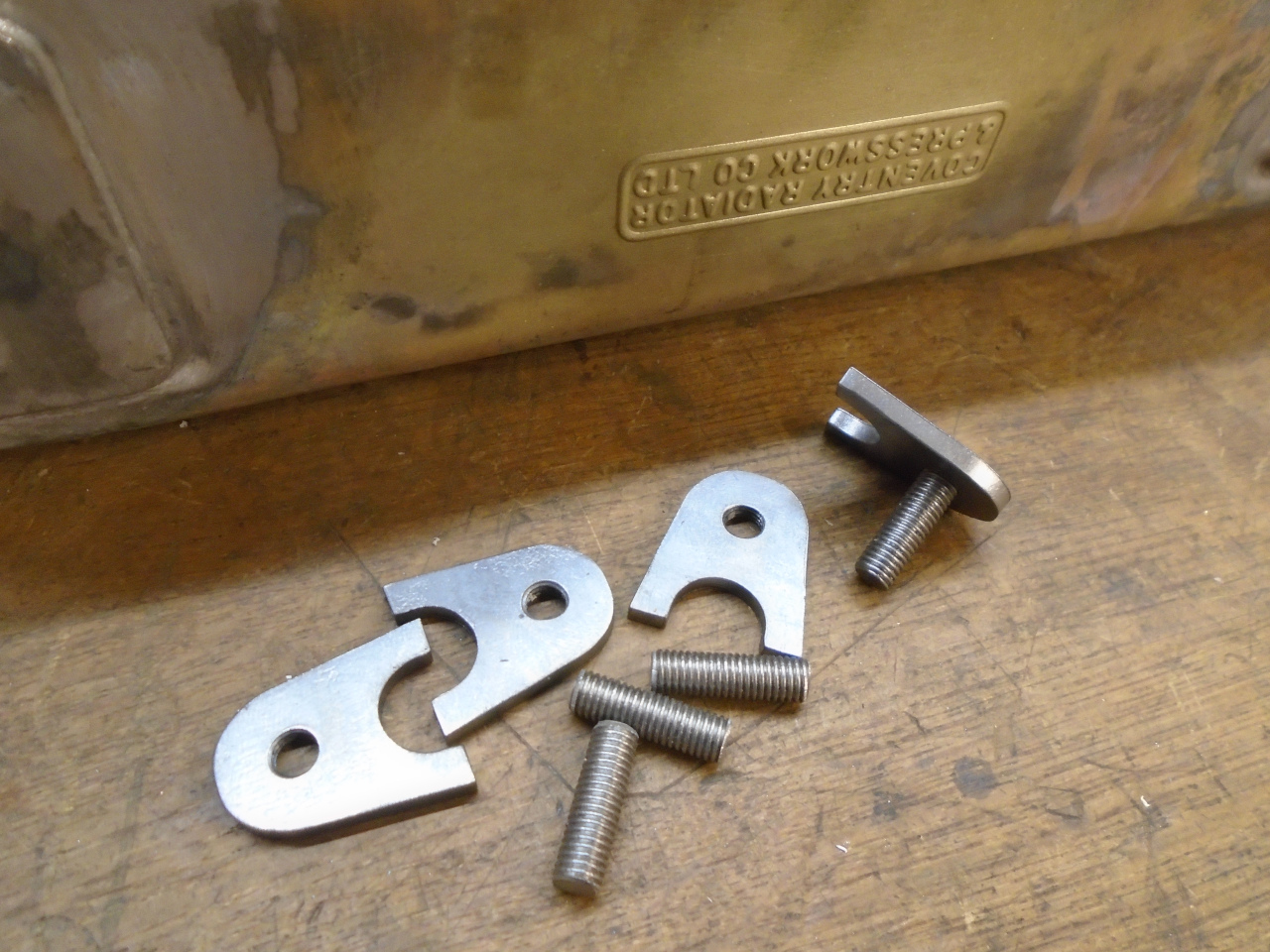
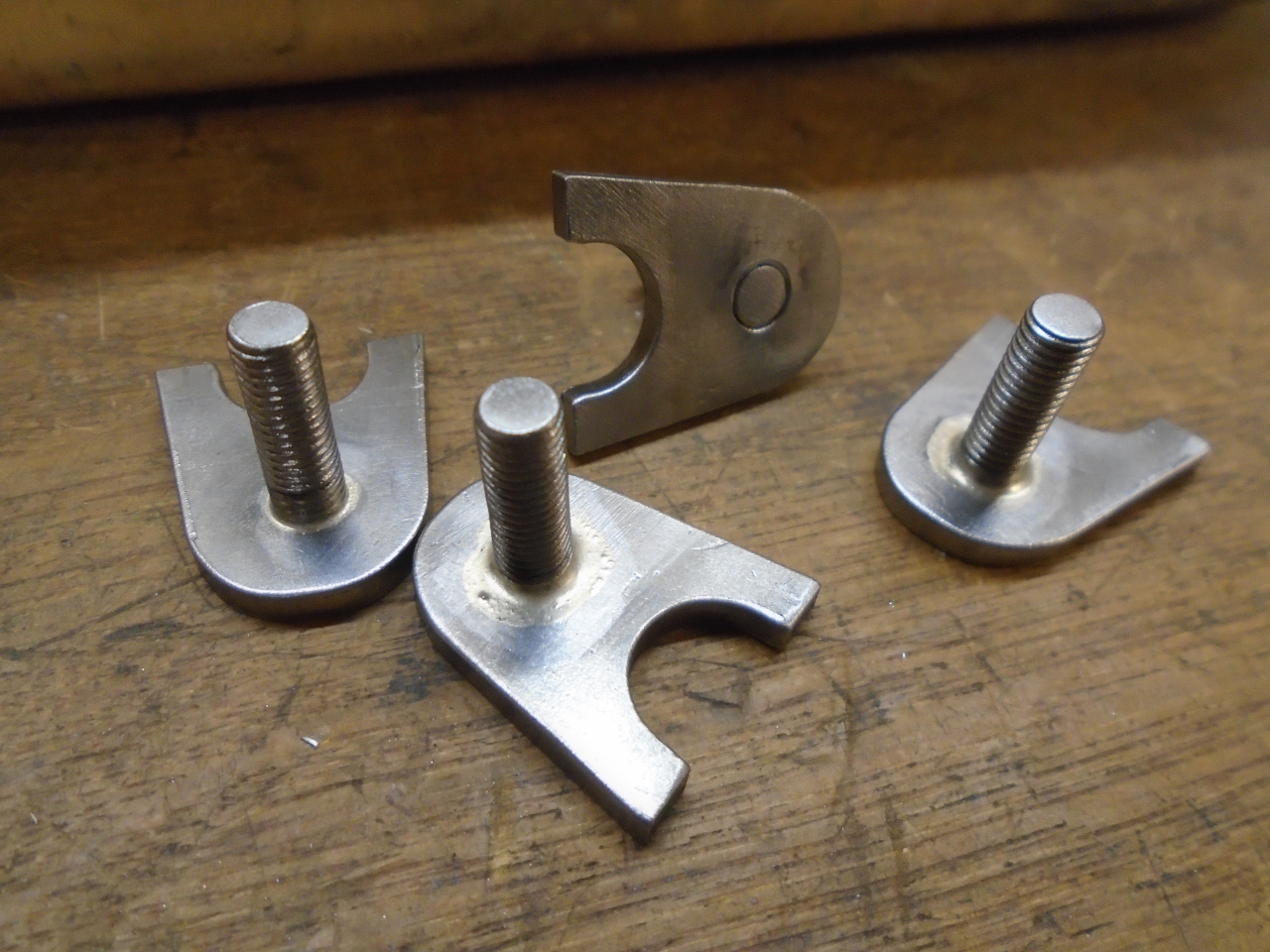
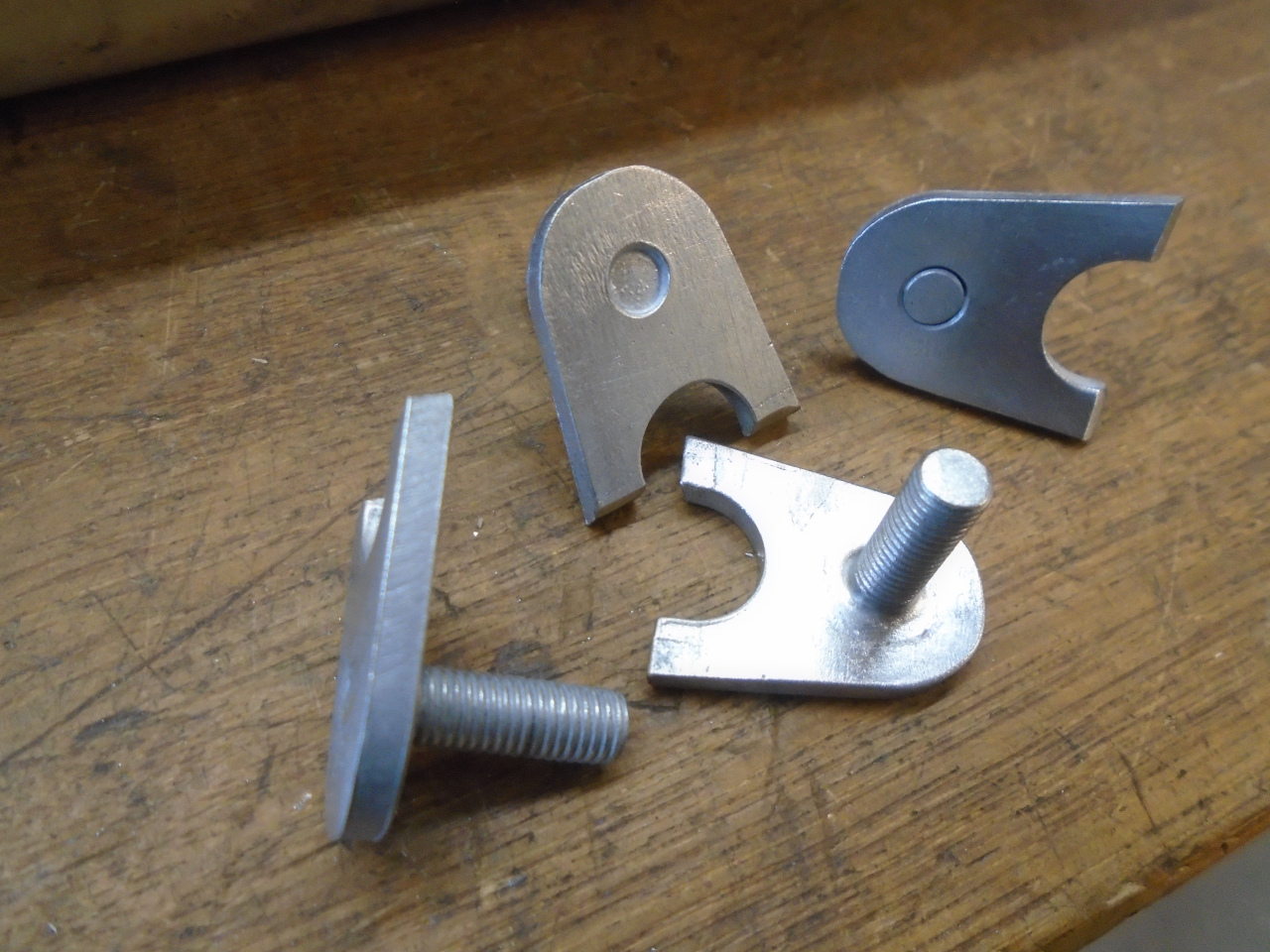
Then welded them in place. They are pretty easily
removable if some future owner doesn't appreciate this mod.
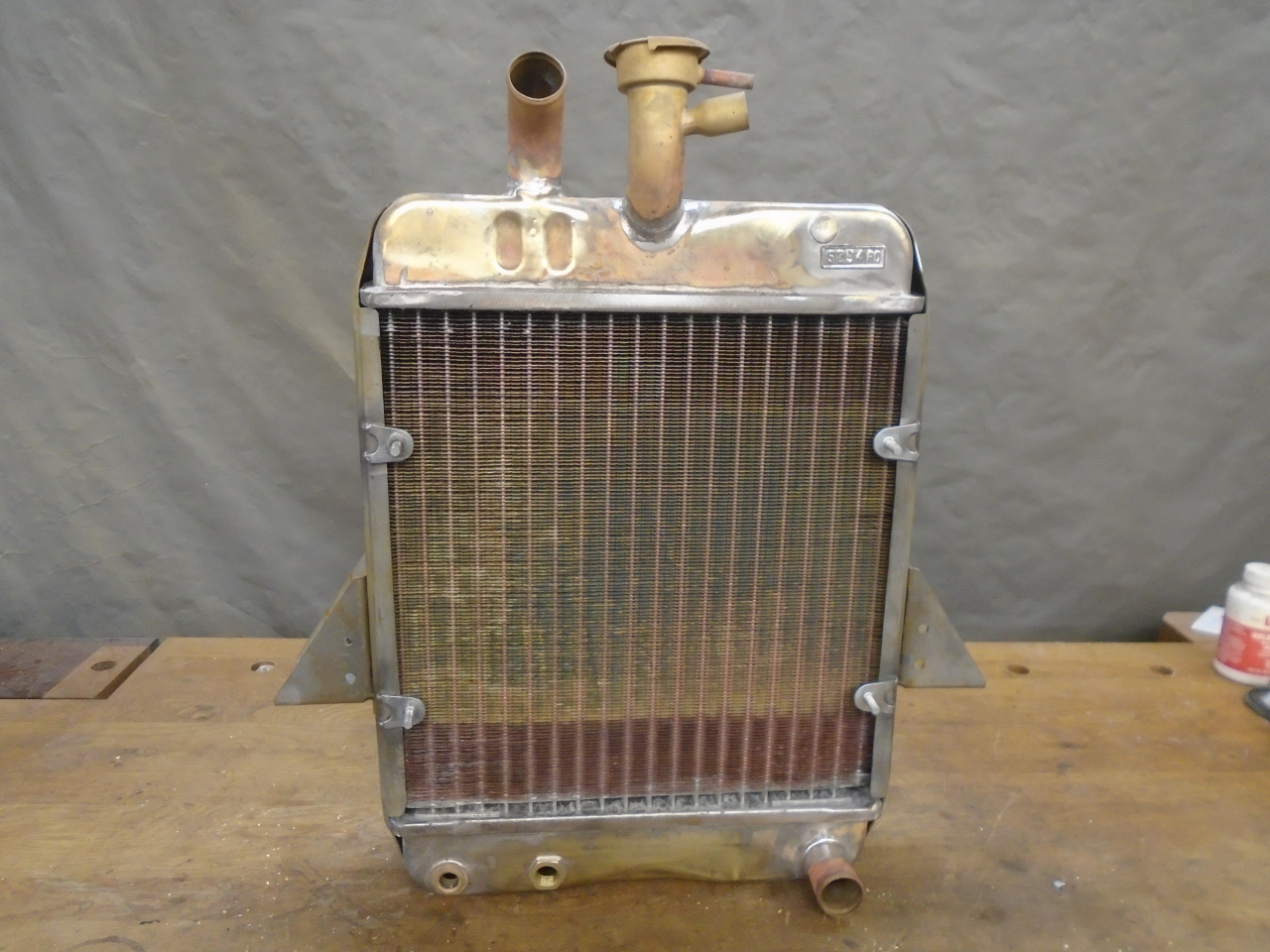
A couple of coats of a two part epoxy primer, followed by a satin
top coat made the tanks and frame look a lot better.
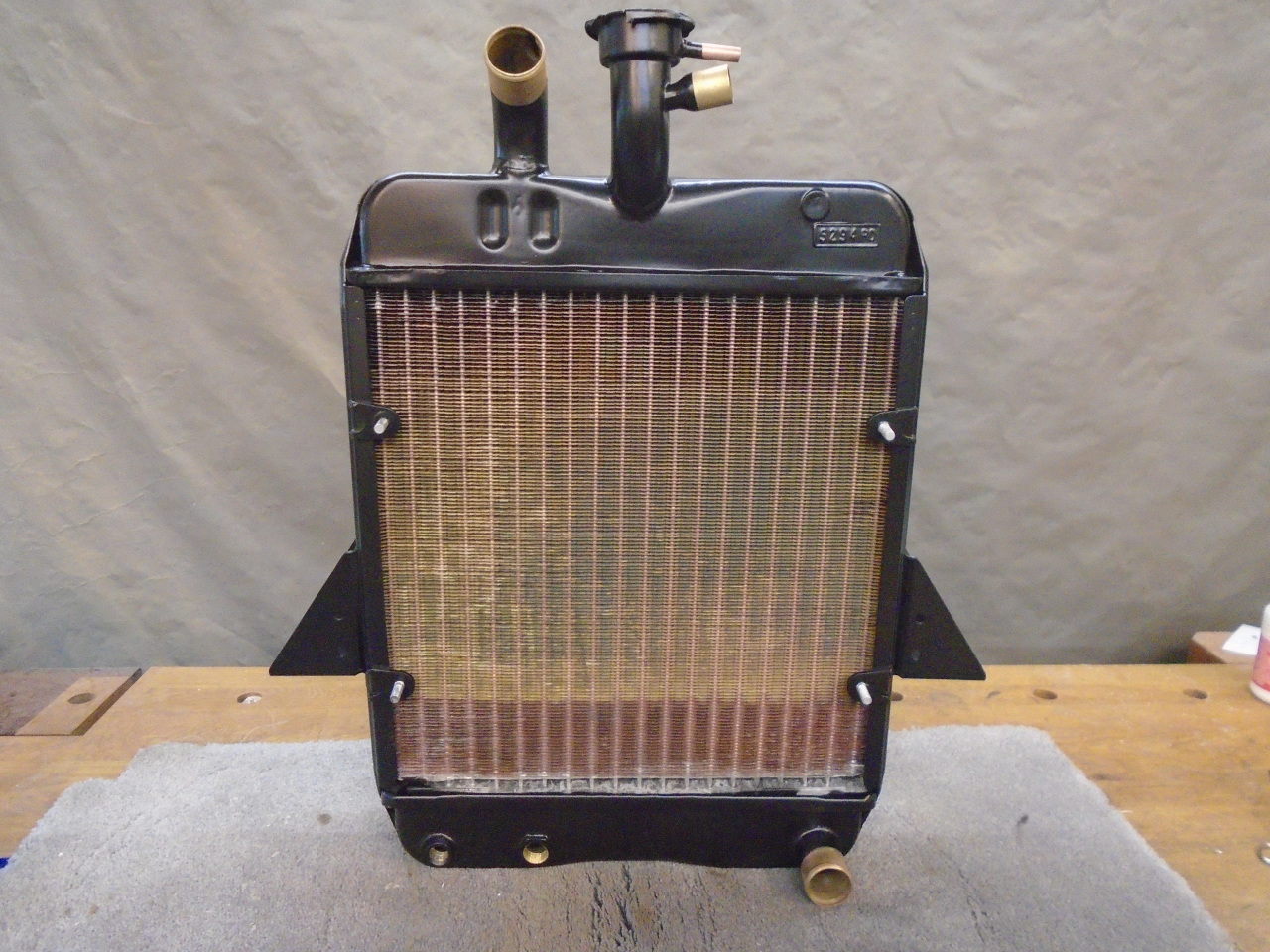
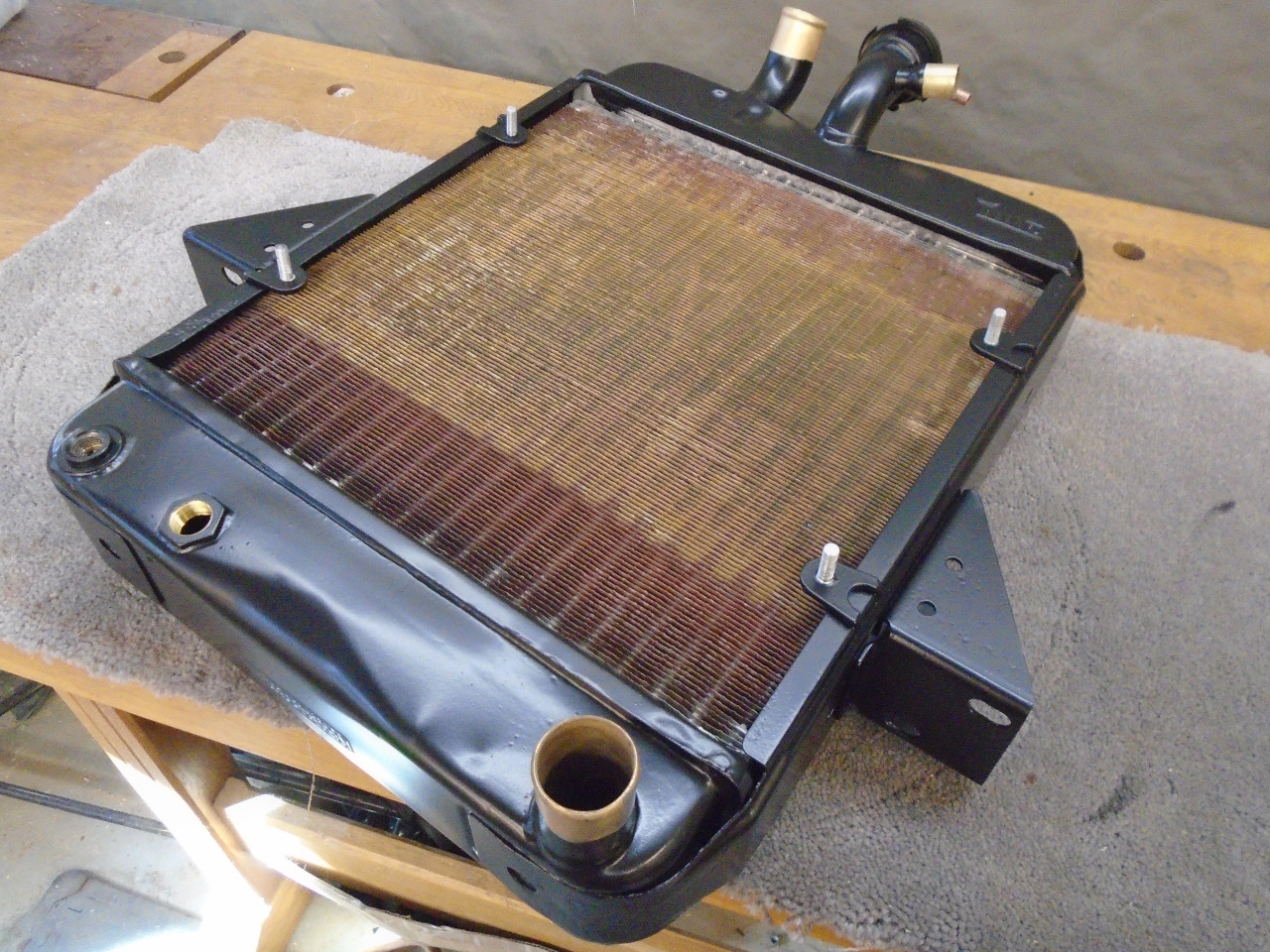
Heavyish paint wouldn't do anything to improve heat transfer of
the core though, so it just got a dusting of flat black for
appearance.
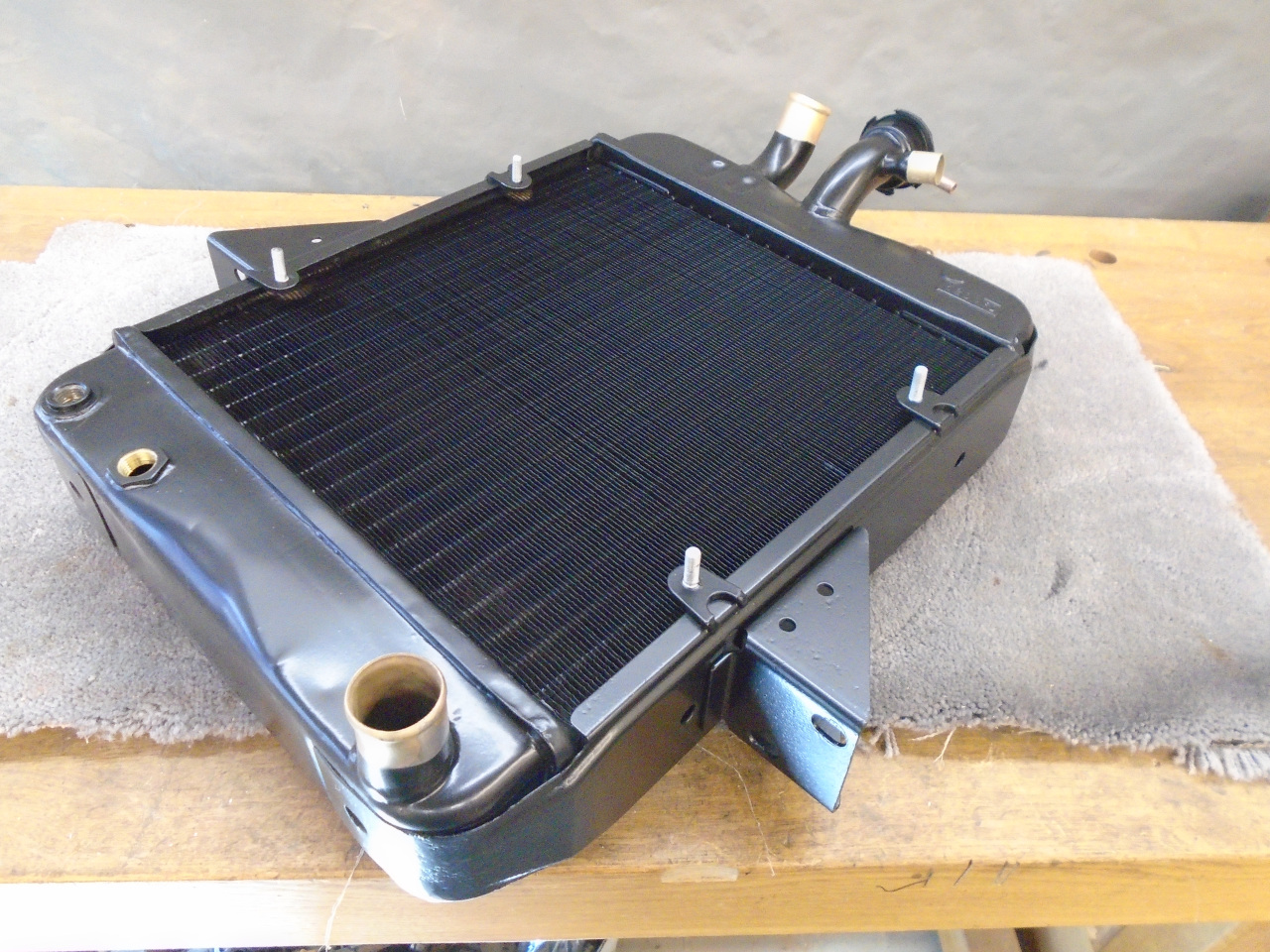
And then the fan went home.
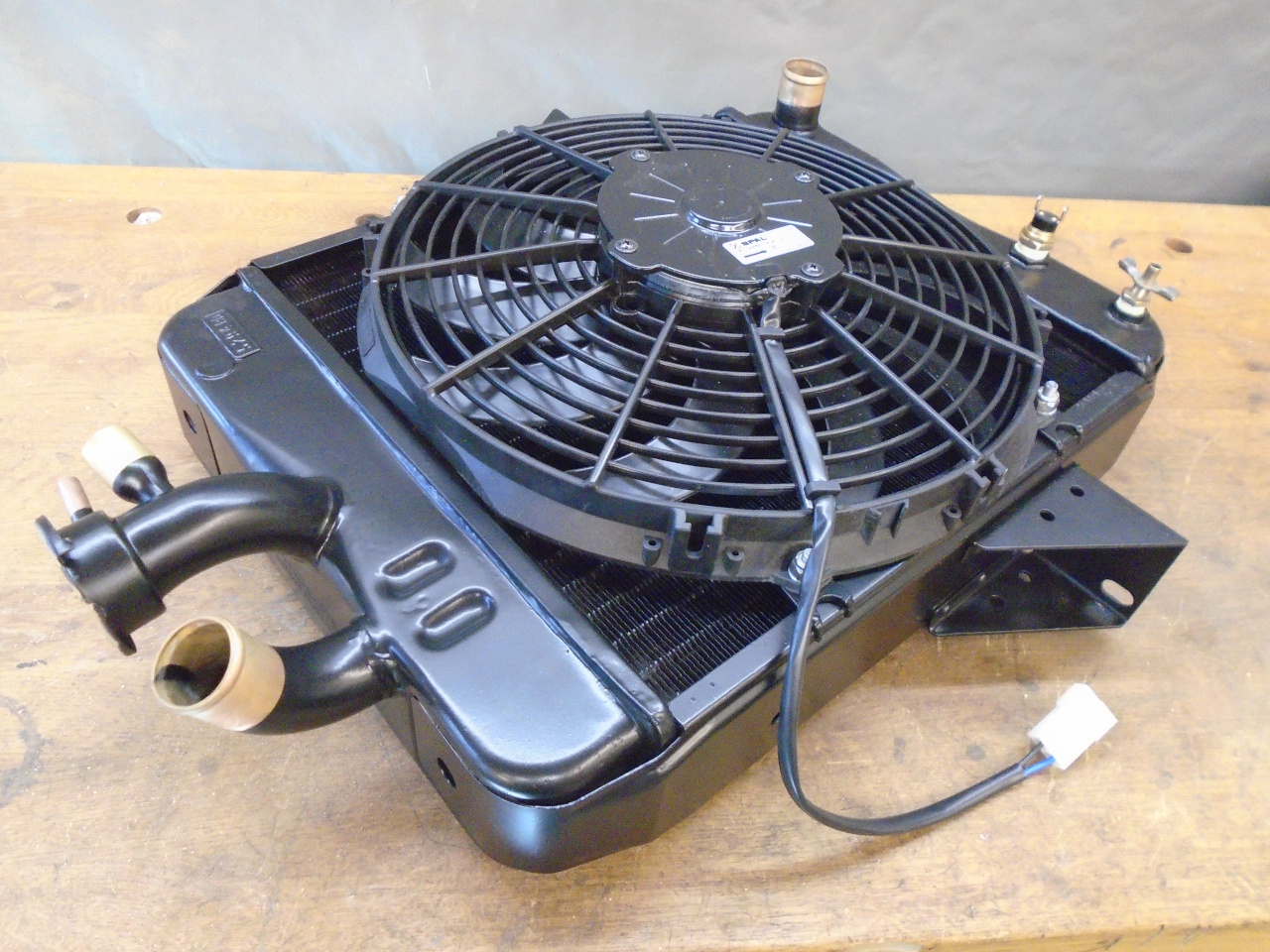
This was not a very difficult project, but a fairly expensive
one. Around $550 for the re-coring and the fan.
Comments to Ed at elhollin1@yahoo.com
To my other GT6
pages